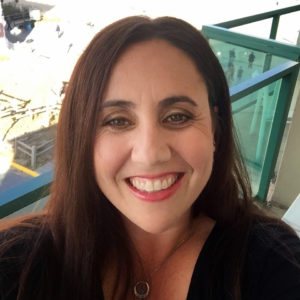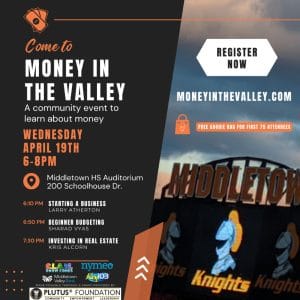If you’re interested in creating a financial literacy program, or helping an existing one, here are some key elements to consider.
According to the 2018 Survey of the States, a biennial, comprehensive study of financial and economic education in United States’s K-12 schools conducted by the Council for Economic Education:
- 22 states require high school students to take an economics course. Just 17 states require high school students to take a personal finance course.
- ZERO states have added personal finance to their K-12 curriculum since 2016.
- 16 states require standardized testing of economic concepts. This number has remained stagnant since 2014.
- More states have economic concepts included in their standards than personal finance concepts.
This is not encouraging data.
Financial literacy and financial health skills are essential. Making good choices with money, whether it’s learning to invest, choosing a bank, understanding interest rates, or avoiding debt, impact a person’s daily life in the short and long-term. While we can certainly learn these skills as an adult, it is even more important to teach them to our kids now. Learning those skills at a young age gives them more time to practice, setting them up for financial success at every and any income level in the future.
With so many schools through the U.S. not providing that financial education, it’s up to us, on the ground and in the field, to do it.
Where to start?

Financial education, literacy, and health are vast topics, making choosing which ones to cover in your financial literacy program difficult. To help narrow it down, though, Fast Company provided a list of five key financial literacy concepts:
- Budgeting
- Impact of interest
- Savings
- Debt/credit
- Identity theft and safety
If you’re interested in creating your own financial literacy program, or even if you want to start teaching the kids in your life about money, and you’re unsure what to focus on, these concepts are a great place to start. In fact, you can even create a program that focuses on just one of these! Some of our previous grant winners do that, and their programs are making an impact in their communities.
Remember that you don’t have to focus on one of these areas; if you know a particular financial concept is an under-served or under-discussed topic, design your program around that.
But having an idea or even a great name for your program is only the beginning.
Here are some other elements to consider when starting a financial literacy or education program.
Elements of a quality financial literacy program
A quality financial literacy program starts with a passionate leader. If you can convey your enthusiasm, knowledge, and desire to improve financial education and health for those you serve, you’re a step ahead of everyone else.
But you also have to have a solid curriculum. Tara Falcone, CFA, CFP®, and founder of ReisUP suggests financial literacy programs have “engaging content, and various forms of it, as well as customizable resources that are designed to grow with them on their personal financial journey.” Paul Vasey, founder of CashCrunch Games, adds that programs should have “activities, reading material and discussions without all the jargon”.
Vasey also suggests that when establishing your program, you should consider the age range of your target audience. Research what the financial literacy standards are for that age and build your curriculum around those. Falcone agrees but expands by offering this tip: do extensive market research to find out what their target audience needs and build a solution to their problem(s).
Meet your audience where they are, says Vasey. It doesn’t make sense to teach them the basics of investing if they don’t understand how to budget.
As far as what not to include? Affiliate links, information that might not be relevant to your target audience, or any sort of ulterior motive that would cloud the mission of your program.
Finding your audience

While online content is wonderful, not everyone has reliable internet access. Additionally, it’s not uncommon to become overwhelmed by the huge amount of information. A Google search of “budget” yields millions of results. If you’re new to money management or are taking it upon yourself to become financially healthy, it’s easy to get discouraged and quit.
That’s why it’s essential to put financial literacy and education programs in schools, libraries, churches and temples, and other community centers. It meets your audience where they are -literally- and makes it easier for them to find the information they need.
However, if you want to teach financial literacy in your community and you’re uncomfortable with public speaking, you can design a course administered by others. For instance, one of the Foundation’s grant recipients, The Mount Everest Money Simulation, did just that. It’s a computer-based course that homeschoolers, Boy and Girls Scout troops, church groups, and others use to learn personal finance concepts.
It offers a practical solution for closing the gap between the lack of personal finance education in schools and the need for kids to learn them.
Supporting financial literacy programs
Paul Vasey told us that financial literacy programs need support because “they are simply undeserved. Financial literacy skills are the most underrated and overlooked life skills”. Tara Falcone added that “…financial literacy programs need support because many schools don’t currently have specific people/departments or budgets/funding dedicated to them. College administrators know that financial education is a practical life skill their students need. But in many cases, despite how much desire exists to implement a program, schools are unable to do so due to budget constraints.”
In other words, since schools don’t have the resources to implement their own financial literacy curriculum, we need to provide it. The same applies to adult-oriented programs, although that provides a separate set of challenges.
Fortunately, it’s easy to support financial literacy education. Using free curriculum provided by agencies such as NEFE, Jump$tart, and Junior Achievement, volunteer your time to teach students or youth groups. Donate to organizations like the Plutus Foundation that offer financial support to the creators and administrators of financial education programs. If your time and money are at a premium, take a few minutes to share information, blog posts, or other promotional materials from financial literacy programs on social media.
You can even talk to your workplace about sponsoring a program.
There’s no shortage of ways to support and encourage financial literacy in your community.
Adults need financial literacy, too
Although we’ve talked heavily about financial literacy related to kids and schools, don’t forget that adults need these skills, too. The same details we’ve discussed, from meeting your audience where they are (figuratively and literally) to not using jargon in your materials to building a solution to their problems, all apply to teaching these skills to adults.
Getting these programs to adults presents different challenges than getting them to kids. However, with a little creativity, we can overcome those challenges. For instance, teaching them after work and providing babysitting services, making them low-cost or free programs, or distributing take-home materials are all ways to encourage adults to participate.
It’s is also essential to make sure the participants are walking into a judgement-free zone. It takes a lot for an adult to admit they’re struggling with money. They don’t want to learn from someone who makes them feel bad about it.
While we have a long way to go in putting financial literacy and education in schools, there are certainly a number of ways to bridge the gap. From creating and administering a program to volunteering your time to simply supporting one, no effort is too small to make an impact.















1 Comment
Kevin · November 21, 2020 at 12:51 pm
I totally agree that this area is vastly underserved, and that needs to addressed